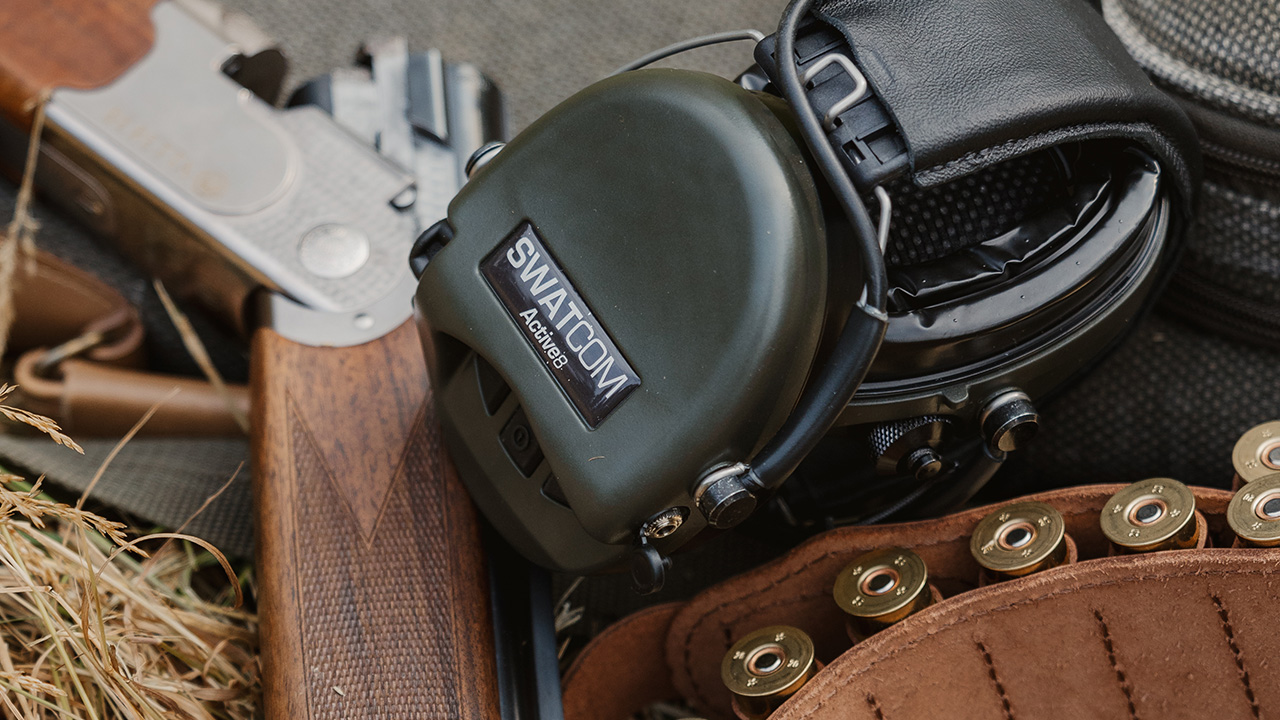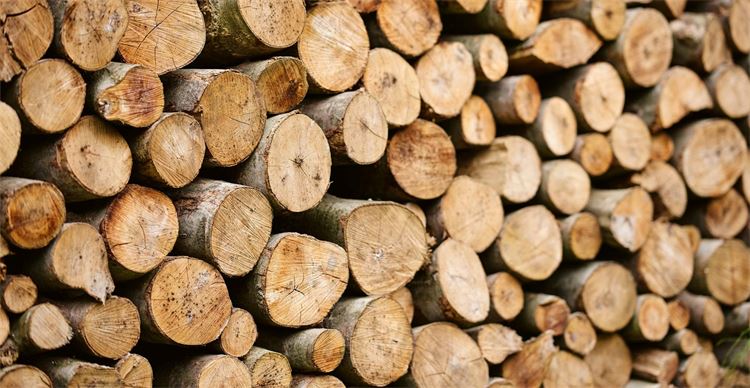What about woodland?
With thorough planning and considered investment, creating woodland that benefits game, wildlife and the bottom line is quite achievable.

There has never been a better time to invest in woodland management. Thanks to biomass boilers and renewable energy tariffs, the wood ‘fibre’ price is at an all-time high, with prices of up to £45/t at roadside being obtained for lower grade conifer material. Hardwood firewood remains in demand with prices as high as £35/t for a standing sale (where the buyer has to fell and extract at their own cost), depending on the site and ease of extraction, and top quality oak is fetching up to £300 a cubic metre at roadside. If you have mature or semi-mature ash in your woods then it might be a good time to consider harvesting it before it succumbs to ash dieback. The strong timber market combined with a range of grants available for woodland management planning, restocking and establishment of new plantations, means that your woodland could deliver a financial return rather than simply being a drain on resources.
With the uncertainty around Brexit causing a great deal of head scratching when it comes to making short-term decisions, investing in long-term projects such as woodland management and woodland planting is more straightforward, particularly when grant funding obtained now can help pay for works that will deliver significant long-term benefits to your woodland.
Over the past 18 years I have been privileged to work with sporting farms and estates across the UK and it has been a source of immense frustration that whilst, in many cases, the farming and farmland conservation credentials are exemplary, the woodland has been neglected. And I’m not just talking about mature or semi-natural ancient woodland; I am talking about 20-year-old plantations that were planted for game but, because they have been neglected, are no longer delivering the game-friendly habitat for which they were created.
The explosion in the deer population has also contributed to the lack of ground cover in many woods and the success or failure of a coppice rotation is often determined by the protection methods put in place to protect the new coppice from deer. If you are not on top of your deer, then that may mean the provision of fencing to exclude deer from a coppice area until the regrowth is above the browse line. Obviously this adds expense and can create problems for the keeper if he/she is trying to move birds through the wood on a shoot day.
So how do we make woodland ‘game friendly’? Well, first it needs to be warm, so a decent hedge surrounding the wood is a good start. Many woods were planted with a hedge surround, but the hedges are often allowed to grow up and out with the trees so now provide very little cover at ground level. Laying an old hedge will have an instant warming effect, or a much quicker method is to coppice and lay the brash over the coppice stools (dead hedging). You then need to ensure there is a ride on the inside of the hedge so that, in the future, the hedge can be managed from both sides. Ideally the trees then need to be ‘graduated’ from low to high as you move further into the wood as this helps to deflect the wind and allows the development of shrubby growth towards the outside. Removing mature hard and softwoods from the outer sides of the wood, as well as pollarding and coppicing other hardwoods and restocking with species such as hazel, holly, privet, thorn, dogwood and field maple, will deliver ideal habitat for a bird that enjoys woodland edge as well as for a host of other species. We know that higher densities of pheasants are recorded in woodlands with shrubby cover (0.3m–2m in height), which can be created by rotational coppicing within woodland blocks. Similarly, good densities of migrant birds, such as nightingale, willow warbler and blackcap, utilise coppice, mainly 4–10 years after coppicing. In contrast, the ground flora is at its most abundant in the first years after coppicing, with the light triggering the emergence of crowd-pleasing species such as bluebell, primrose and wood anemone. Very old coppice supports fewer bird species and blocks out light, reducing the ground flora, but is typically rich in fungi, bryophytes and invertebrates (such as stag beetles) associated with the dead wood.
Rides and glades in larger woodlands can be very important in linking blocks of coppice of different ages, particularly for species that have specific habitat requirements within their lifecycle. For example, the rare heath fritillary butterfly is known as the ‘woodman’s follower’ due to its historic dependency on coppicing. The larvae’s main food plant is cow-wheat, which is found in sunny clearings within newly coppiced woodland, using the the dappled shade at the edge of the clearing to maintain an appropriate temperature. The butterfly does not travel far, usually less than a hundred metres, making the species completely dependent upon the woodman coppicing areas and rides to link newly coppiced areas.
Equally, rides create additional ‘edge’ habitat. Edge habitat is key to good pheasant densities, with radio-tracking showing that the majority spend the winter months within 30 metres of good quality woodland edge. It will also support more territories and nesting habitat for wild pheasants and other birds during the breeding season. Therefore, regular rotational coppicing of the shrubs along rides and woodland edges should always be a priority for any shoot, even if labour limits the ability to coppice as frequently elsewhere in the woodland. The diagram taken from the Forestry Commission ride management guide shows a structure ideal for both wildlife and game, with the width of the ride being at least 1.5 times greater than the tree height.
Well-managed rides can also create an extra drive or two. Some Guns have become very adept at shooting high birds flushed off the tops of hills when they are standing in the open and can therefore take a measured approach. Put these same Guns on a woodland ride and ask them to shoot birds that are not as high but that give them far less time to mount and shoot, and you may well see a few red faces!
Although the primary purpose of your woodland management may not be for shooting, if you have a shoot on the farm/estate then please involve the keeper in the decision making process. Keepers can, understandably, be very protective of their woods but by demonstrating that selective thinning, felling, pollarding, and coppicing delivers significant benefits in a relatively short timescale, you will make the keeper your greatest ally as he/she will be more keen to keep on top of deer and squirrel numbers.
What about planting new woodland? We are often asked to advise on establishing game crops on difficult ground, usually with perennial crops such as chicory, sweet fennel, reed canary grass or miscanthus, when in fact the site lends itself to a new plantation. Again, it doesn’t deliver the instant fix that some people are looking for but by carefully planning the plantation and sowing some perennials around the perimeter and in-between some of the tree rows, you can have a reasonable driving area in a couple of years.
In terms of financial support there are grants available for woodland creation and woodland management and some of them are very attractive from a monetary point of view (up to £6,800 per hectare). However, before going down the grant route, make sure you understand the terms of the funding as you may have restrictions on the species you are allowed to plant, or have to provide a significant amount of evidence each year to support your claim.
Choice of species for a new plantation does depend on location, soil type and the intended end use, be it high value timber, a roosting wood or a driving wood, but in most cases a mixture of shrubs that can be coppiced, fruiting trees, quality hardwoods, and some softwoods to act as a nurse crop whilst the plantation is developing, will deliver on all fronts.
Careful consideration of the layout of a plantation before planting – taking into account the prevailing wind and contours – is essential as you don’t want to get 10 years down the road and realise the flushing areas and rides are hopeless for producing quality birds. In the plan, ensure you factor in more open space than you think is necessary as canopies soon start to shade out species beneath them. Once you have decided on the layout, make sure that the appropriate species are planted at the appropriate densities in the appropriate areas to create a woodland that you and future generations can enjoy.
Related Articles
Get the latest news delivered direct to your door
Subscribe to Fieldsports Journal
Elevate your experience in the field with a subscription to Fieldsports Journal, the premium publication for passionate country sports enthusiasts. This bi-monthly journal delivers unparalleled coverage of game shooting, fishing and big game across the UK and beyond.
Each issue offers a stunning collection of in-depth features, expert opinions and world-class photography, all presented in a timeless yet contemporary design.
Save 10% on shop price when you subscribe, with a choice of packages that work for you. Choose from Print & Digital or Digital only with each journal delivered directly to your door or via the app every other month, plus access to past issues with the digital back issue library.









